As I’ve begun to explore the interpersonal dynamics of workplace discrimination more closely, I have gone back to update my own understanding of workforce diversity data and what it tells us about the the demographic makeup of the modern workforce. I have been disappointed to find that the racial and gender statistics of leadership don’t look much better than they did 10 years ago, when I first began this work. However, it’s interesting to me that even though the numbers haven’t changed significantly, the discussion about diversity in the workforce has evolved pretty significantly.
Perhaps the discussion has shifted because we have invented new ways to measure bias, or because we are discovering more granular ways to define distinctions between groups, or because more people are unwilling to tolerate, and keep open secrets about, discrimination.
It’s probably all of these factors put together. As a result, the definition of diversity has expanded so that today there are almost as many forms of diversity as there are people, when you include the many combinations of race, ethnicity, gender identity, sexual preference, religion, age and thinking/personality style that any one person can embody.
Now that everyone (including the formerly thought-to-be majority classes) can be segmented into a distinct minority group capable of being biased against, then “workforce diversity” has evolved beyond being a workplace issue, affecting a few distinct groups, and has truly become a social justice and human rights issue that impacts everyone.
Changes in the definitions and discussions around workforce diversity
We see any problem through the lens we look through, which is why the skin color and gender expression our eyes show us when we look at each other became the original framework for the homogeny vs. diversity issue in society and in the workplace. Racial and gender demographics have historically formed the bedrock of our workforce diversity discussions, and the policies that they produced have tended to address these same demographics, i.e., how many people of color and women do we have in leadership and in our employee base?
What most of us don’t see, however, is that all humans engage in unconscious bias, which can underlie discrimination if our biases are not consciously redirected.
Unconscious Bias
As I’m writing this, the repercussions of the 2017 Harvey Weinstein sexual harassment scandals continue to bring down our silver screen idols and kings of industry alike. While I don’t know a single woman who finds the resultant #metoo revelations surprising, almost every woman having experienced some form of harassment due to her body parts, these scandals are merely the extreme results of something much more subtle, but arguably even more important. Many of the men and women cited in these stories will tell you privately (and more and more publicly) that “I figured this kind of behavior was just the way things were in my ____(fill in the blank with ‘industry,’ ‘office’, ‘company’ etc.)” In this moment of time, thanks to a few brave women who spoke out about Weinstein, many men and women are becoming conscious of the ways they have personally tolerated, contributed to and participated in cultures that perpetuated predatory and discriminatory behavior.
Most of the time, because nobody calls attention to it in a way that shocks the system as effectively as did Katherine Kelly and Ashley Judd regarding Weinstein, none of us can really see the biases we have that cause us to discriminate against others. Research shows that all human brains — including yours and mine — are bad at identifying their own unconscious biases, which tend to manifest very subtly and in ways that many people refuse to, or literally cannot, see. (For a primer on unconscious bias, read these articles and studies on Forbes, Fast Company and University Of North Carolina.)
But just because we cannot see our bias does not mean that it does not affect us, our working relationships and our workplaces. As one meta-analysis found, however:
[A]cross every job and individual outcome, the effects of subtle discrimination were at least as bad as, if not worse than, overt discrimination. Subtle discrimination has not-so-subtle effects on employees and their performance at work. – King, Jones, HBR.com, 2016
Unconscious bias means that just about every dimension of being human can become a cause for discrimination, due to race, gender, religion, ethnicity, clothing choice, age and anything else you can imagine. – Click To Tweet
One new area that has popped up in the discussions on diversity and discrimination over the last decade is ageism, which is what happens when we penalize older workers simply because their number of years on the planet do not fit the unconscious “young ideal” we are biased to favor. In fairness to our unconscious brains, ageism can also result from a more conscious organizational desire to keep employee salaries low by assuming that older workers will expect higher compensation and have more financial requirements. We also consciously discriminate against older workers when we do not test our beliefs about an individual and simply assume that “they won’t understand modern technology.” Ageism, both conscious and unconscious, screens out people with valuable experience.
Gender Identity and Sexual Preference
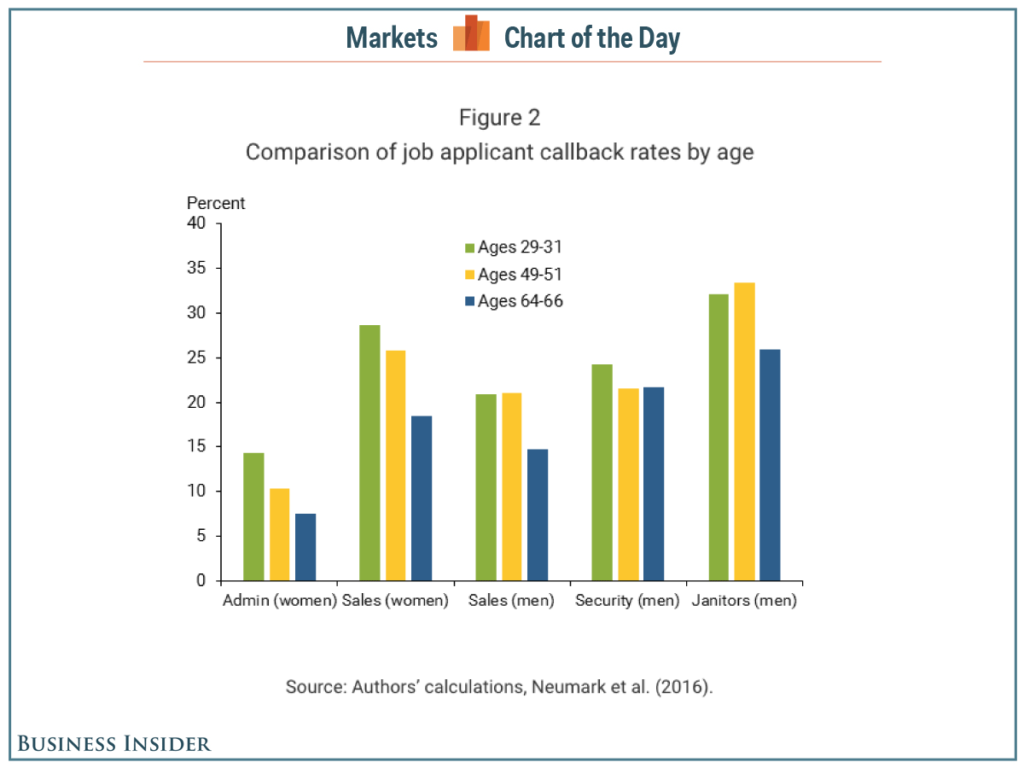
Source: Business Insider, 2016
Another example of the ways in which the fundamental definitions of diversity are changing become apparent when we look at the debate regarding the rights of people who consciously self-identify somewhere other than one-or-the-other end of the gender and sexual preference spectrum. This is confusing for many people who don’t understand why the binary classifications of “(straight) man or woman” don’t always offer a meaningful choice on an employment application. [To dive in and get educated, check out these articles on the gender spectrum, how to talk to and about genderqueer people, and some science behind these issues.] But for some employees who feel more comfortable with identities somewhere in the middle of the LGBTQ/non-binary spectrum, the standard Male/Female choice can feel constraining, if not make them feel like they are lying outright by picking one of those choices.
The totally individual uniqueness of gender identity and sexual preference many people feel has birthed a burgeoning discussion about the mechanics and ethics regarding how to collect data in this area given the fact that gender identity and sexual preference are primarily a private/internal experience that individuals choose to express externally in personal and unique ways. Sometimes these external expressions, efforts to be their authentic selves, make them vulnerable to workplace and cultural discrimination and abuse.
While comprehensive data on sexual preference and gender identity diversity in the workplace is hard to find, the potential for abuse is being taken seriously as evidenced by a large number of of companies (big and small) who have non-discrimination policies addressing gender identity. This is probably driven by both consumer forces and the fact that younger generations of workers and customers are less inhibited by gender and sexual stigmas than their older counterparts.
Personality and Thought Diversity
Other classifications of diversity, particularly in the unconscious realms of personality type and thinking style, is also a popular way of exploring diversity these days. See the following data to understand how our corporate cultures unequally reward extroverts, for example.

- Source: Business Insider, 2015
In addition to personality tendencies, new discussions about the value of thought diversity have begun to shape an even more complicated picture about who and what is favored and who and what is discriminated against. Thought diversity is an interesting wrinkle in the overall discussion in the sense that it would seem to broaden the definition of “diversity” itself. However, the primary benefit sought by looking through the thought diversity lens seems to be building a more innovative company culture by reducing groupthink tendencies in teams and workgroups. The presumption is that diversity creates innovation while homogeneity creates groupthink. This is in contrast to the social justice benefits — engaging more people in the workforce and economy — that result from race-, gender-, age-, ethnic- and other-related diversity.
Current Demographics Related to Workforce Diversity
While the discussion about diversity has expanded, our measurement systems have not. In fact only 3% of Fortune 500 companies publish diversity data. But based on the data that is collected and published, it’s pretty clear that most organizations are still predominantly white and male at the top.
Despite the excuses and rationale people come up with consciously (e.g., “We looked but couldn’t find any good candidates that don’t look like us”), and unconsciously (e.g., “There is no racism and sexism in our company even though we have no women or people of color on our board or in our executive suite”), the face of leadership in our culture does not match the face of the people themselves.
This article is already long enough, so I’m just going to offer up the data below from credible sources to speak for itself. (Note that many companies do not release data that would provide a more complete picture.)
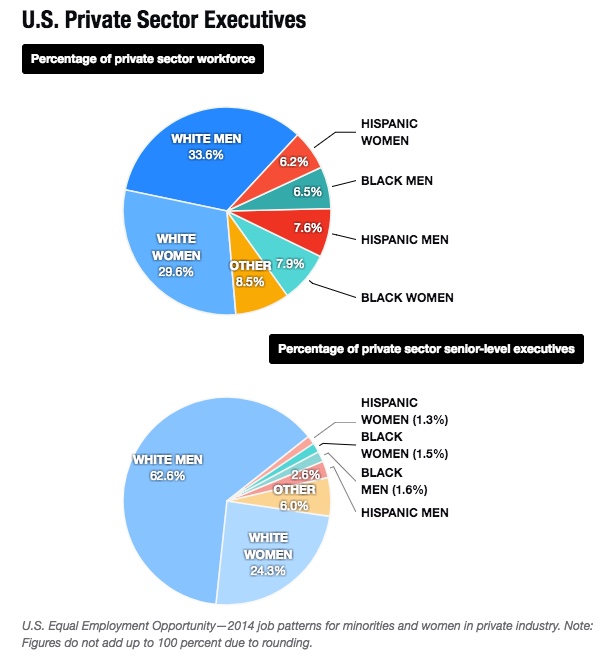
- Credit: Fortune 2017
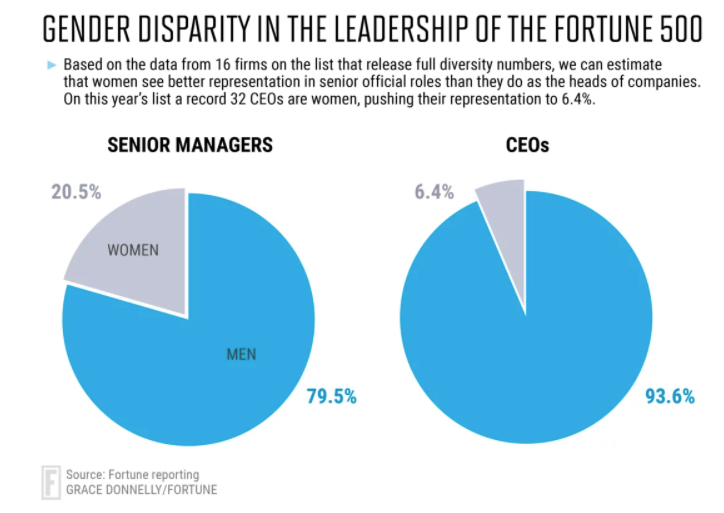
- Source: Fortune, 2017
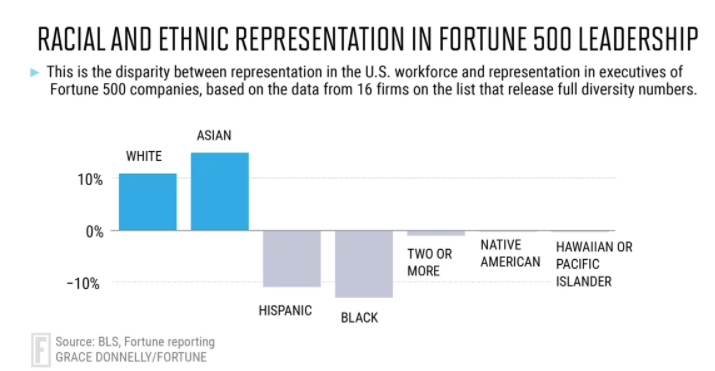
- Source: Fortune, 2017
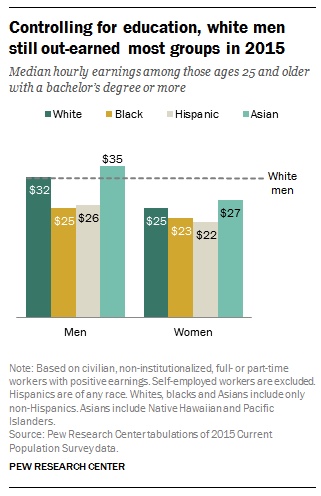
- Source: Business Insider
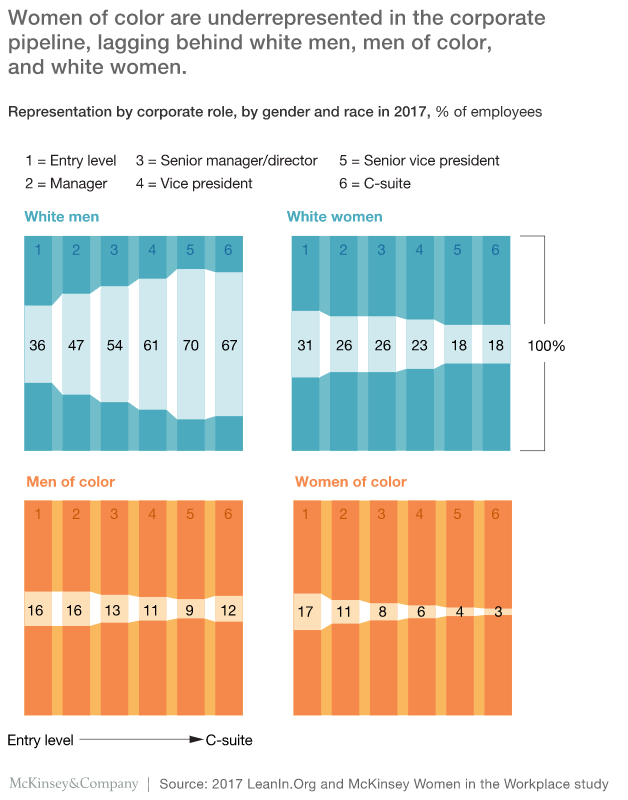
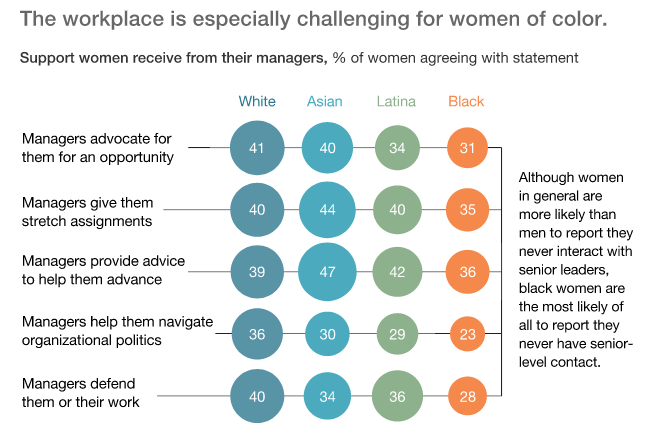
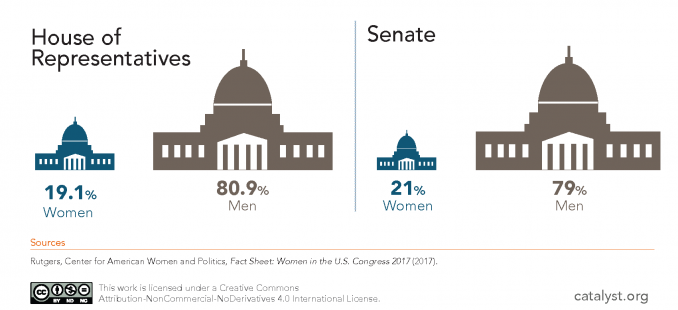
- Source: Catalyst, 2017
Racial Composition of the 115th Congress of the United States
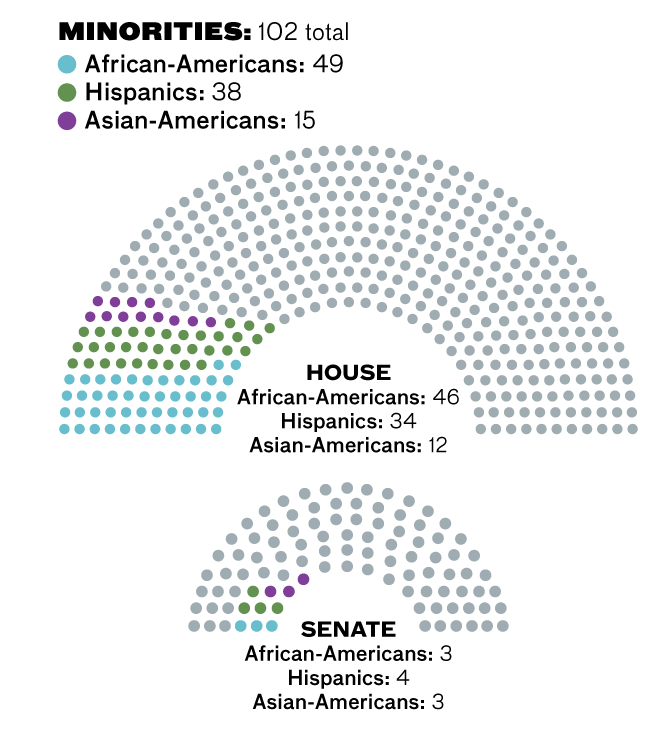
Religious Composition of the 115th Congress of the United States
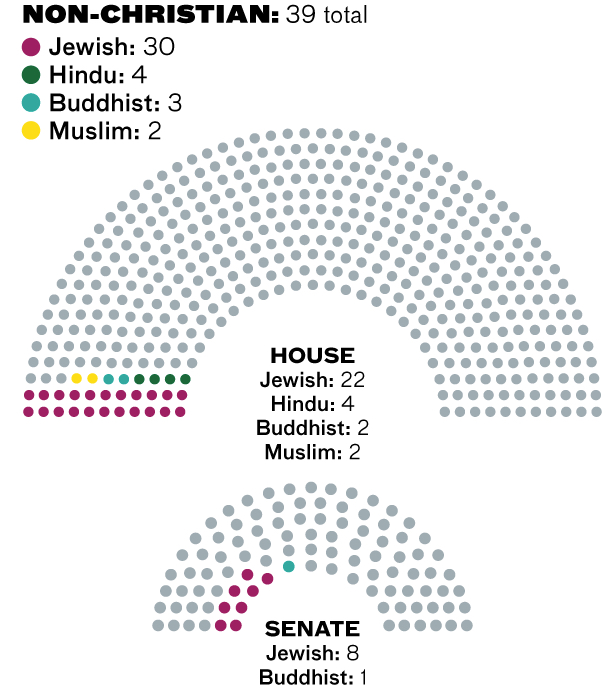
- Source: The Hill, 2017
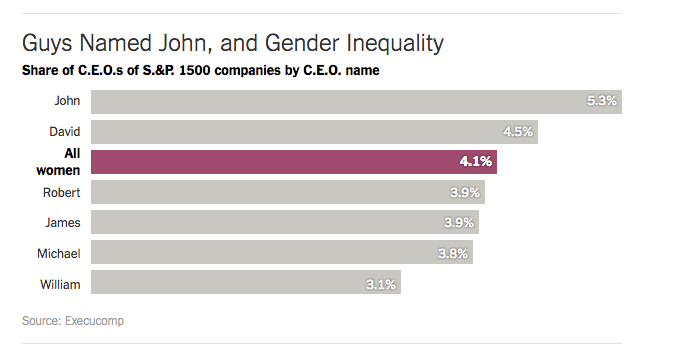
- Source: NYTimes, 2015
The bottom line is that workforce diversity in our society is still a thing. Our workplaces are not diverse when we look through the leadership lens, and the more we understand how diverse people actually are, the less diverse our organizations look by comparison.
Check out our free coaching resources!” and make free coaching resources!
Guide to Women in Leadership
Organizations with women in their executive suites regularly out-perform others. Yet rising female executives (and their mentors) are frustrated at how hard it is to break through the glass ceiling. In this extensive guide, Executive Coach Dana Theus shares her tried and true strategies to help women excel into higher levels of leadership and achieve their executive potential.







